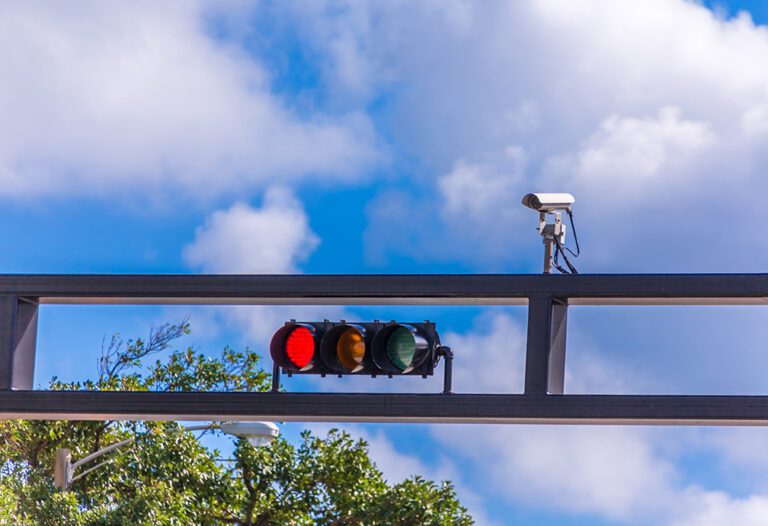So, an AI program, a traffic camera and a truck driver walk into a bar…. Ok, so maybe I don’t know a joke about these things. However, I do know that they are more closely related than most folks realize.
How is that? Well, I am glad you asked.
As we all know, Artificial Intelligence (AI) is the new hot topic in the media. Everyone is trying to get a handle on what it can do, how it will be used and whether it will take our jobs. In addition, there are concerns by many that AI will rise up and overthrow us. OK, maybe just me — but let’s be honest: I have seen the Terminator and Matrix movies, and I know how this story could end.
All joking aside, AI is a fantastic tool that can accomplish things in a second that would take humans days or weeks or years to complete. It can compile data, draft articles, create artwork and assist police with enforcement of traffic laws.
The last part of that sentence is what should grab your attention. In fact, I should probably clarify that this is already happening. If you don’t believe me, read on.
The first example of AI use in traffic citations can be found in the great state of North Carolina. In NC, the highway patrol is using AI equipment to crack down on distracted truck drivers. Here is how it works: A company called Acucensus makes equipment that has been installed along Interstate 40. The equipment looks like it could be part of a construction project — but it has four cameras that take photos of each passing truck, its license plate and an image (looking down through the windshield) of whatever the driver is doing at the time.
Here is where it gets interesting. Rather than having humans look at each image to determine if the driver is talking on the phone, not wearing a seat belt or any other violation, an AI program is used to review all this information in a fraction of the time. If the AI determines the driver is distracted or not wearing a seat belt, it will relay a series of images to law enforcement, which is parked just up the road, so the driver can be pulled over. There are no way humans could review and respond in this short of a time frame.
The good folks in New York have taken the use of AI up a notch. The story goes like this.
In March of 2022, the Westchester County Police Department arrested David Zayas while he was driving a gray Chevrolet, which was unremarkable, as was his speed. The reason for the stop is this: A new AI tool identified Zayas as a possible criminal. Specifically, the routes he drove were the same as those often used by drug traffickers.
How in the world did they know Mr. Zayas’ traffic pattern? The answer is simple: AI.
Using AI, authorities were able to search through 1.6 billion license plate records that had been gathered across the state over the previous two years. Based on this information, the AI determined that Zayas’ travel pattern mimicked that of a drug trafficker. In its filing, the department of justice noted that Zayas made nine trips from Massachusetts to parts of New York on routes known to be used by drug traffickers. Based on this information, Zayas was pulled over, his car was searched — and 112 grams of crack cocaine, a semiautomatic pistol and $34,000 in cash were found. A year later, Zayas pled guilty to a drug trafficking charge.
It is obvious that the AI program works and will likely continue to be relied upon by police. Now, for full disclosure, automatic license plate recognition (ALPR) has been around for a hot minute and is used to search for plates associated with specific crimes.
It is the “growth” of AI that causes concern. In the Zayas case, AI was able to use images gathered over a two-year period from 480 cameras in Westchester County alone to examine driving patterns and determine that he was a potential criminal.
Of course, I suspect the use of AI surveillance in cases like this will trigger constitutional issues that will be litigated in the courts. In fact, Zayas’ lawyer, Ben Gold, contested the AI-gathered evidence against his client. To Gold the search of every car caught on camera is “the specter of modern surveillance that the Fourth Amendment must guard against.” Gold also said, “This is the systematic development and deployment of a vast surveillance network that invades society’s reasonable expectation of privacy.”
While this case deals with the driver of a personal vehicle, the question must be asked: Could this technology be used against commercial drivers? If so, would it be a violation of a driver’s reasonable expectation of privacy? The answers are of course and maybe.
The courts have long held that because the trucking industry is heavily regulated, truck drivers have a lower expectation of privacy than others. The reasoning goes like this: Because the industry is so heavily regulated and the purpose of the regulations is to protect the health, safety and welfare of the public, devices like ELDs, which can monitor a driver’s location, do not violate a driver’s right to privacy. ELDs are necessary to accomplish the overarching goal of making the roads safe. The same argument can be made for the use of AI in this scenario.
The only way we will know if this type of technology is constitutional is for the issue to be brought before the courts, something I suspect will be occurring soon. So, with that in mind, stay tuned. This could have far-reaching impacts on our industry.
Brad Klepper is president of Interstate Trucker Ltd. and is also president of Driver’s Legal Plan, which allows member drivers access to services at discounted rates. For more information, contact him at 800-333-DRIVE (3748) or interstatetrucker.com and driverslegalplan.com.
Brad Klepper is a regular contributor to The Trucker, providing valuable information for drivers and motor carriers. He is also president of Interstate Trucker Ltd., a law firm entirely dedicated to legal defense of the nation’s commercial drivers. Brad is also president of Driver’s Legal Plan, which allows member drivers access to his firm’s services at discounted rates.











